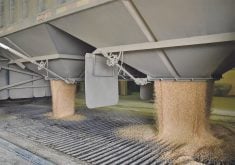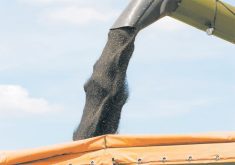Of all the livestock diversification options promoted back in the 1980s and 1990s, about the only one to withstand the test of time is bison. Over the years, bison producers have seen good times and poor times. This is a good time with strong profitability and excellent future prospects.
It’s still a niche. Fewer than 500 bison producers are members of the Canadian Bison Association. The biggest membership is in Alberta at 175 producers, followed by Saskatchewan at 147. Saskatchewan has nearly as many registered bison farms as dairy farms.
At the recent joint convention of the Saskatchewan and Manitoba Bison Associations in Yorkton, the optimism was evident. The biggest problem for the sector is not enough bison supply to meet market demand.
Read Also

Beef cattle more prone to trace mineral deficiencies
The trace mineral status of our cows and calves is a significant challenge for western Canadian producers and veterinarians.
Most bison, perhaps 80 per cent, are sold into the United States either as calves going to feedlots or finished animals going to processing plants. The threat of American tariffs loomed large. With that threat seemingly over, producers are looking forward to strong profits for the foreseeable future.
At one time, Canada had a shortage of processing capacity, but that’s no longer a problem. Many smaller packers don’t have enough cattle to process and are happy to have bison. What’s more, consumers have greater access to bison meat than ever before.
Previously, the main source was farmgate sales through local abattoirs, but now bison can be found in stores such as Costco, Sobeys and IGA. The website, saskbison.ca has a list of all the locations where consumers can find bison.
Unfortunately, increasing the supply is an uphill battle. After a number of challenging years, many producers are likely to sell heifers for slaughter rather than retaining them to build the herd. Hopefully, as cash flow improves, more heifers will be retained.
Over the years, new bison operations were often spawned by producers converting from beef cattle. Bison producers typically say that they’d never go back to cattle, siting the ease of caring for the hearty, native animal. The one drawback is extra cost for fencing and handling facilities. However, cattle are now very profitable as well, providing little incentive to switch species.
Through the 1980s and 1990s, it was often tough to make money in any segment of mainstream agriculture and all sorts of livestock diversification options were attempted. Ostrich production made a big splash, but was short-lived.
Many producers jumped into elk, but when Chronic Wasting Disease hit the industry, no solution was ever found to fully overcome the problem. Some producers hung on for a long time hoping for a comeback. Today, elk producers are few and far between.
Wild boars were raised by some producers for a time, but when that proved uneconomic, released and escaped animals created the wild boar problems we face today.
At one time, chinchillas were raised for their pelts on a number of farms. As pelt prices and the number of buyers dropped, operations liquidated. For a while, Saskatchewan had a processing plant for meat rabbits, but the plant went out of business and what looked like a promising diversification ended in disappointment.
While bison production hasn’t exploded, it has a great deal of potential due to First Nation and Metis communities that hold a sacred link to the animals. First Nations have the land base and the labour and often have the capital required to increase their bison herds and market more animals into commercial channels. It would appear to be a win-win situation for all involved.
Kevin Hursh is an agricultural journalist, consultant and farmer. He can be reached by e-mail at kevin@hursh.ca.
















